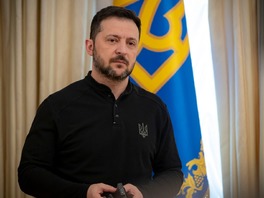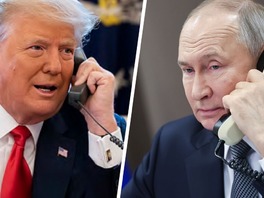The IL-76 plane crash in Russia has provided the Kremlin with an opportunity to orchestrate a widespread information campaign aimed at discrediting Ukraine globally. In an effort to scrutinize the vulnerabilities in Russian propaganda, Apostrophe has undertaken an analysis focusing on the attempt to implicate Kyiv in the intentional destruction of the IL-76 plane, which, according to the Russians' unconfirmed claims, was carrying Ukrainian prisoners of war.
Inconsistencies
Let us delve into the central issue. Russian propaganda claims that the downed IL-76 carried 65 Ukrainian prisoners of war, 6 crew members, and 3 guards. Subsequently, Andriy Kartapolov, the chairman of the defense committee of the State Duma of the Russian Federation, stated that another plane with 80 prisoners on board was trailing the IL-76 and ‘managed to turn around.’ The critical question arises: why segregate the prisoners into two planes when they could be accommodated in a single aircraft?
‘260 paratroopers easily fit into this plane, and all the prisoners could be stuffed into one plane, if the exchange really had to take place’, the Major General of the reserve, former deputy head of the SBU Viktor Yagun notes in his comment to Apostrophe.
The limited security personnel stands out, especially given the declared number of individuals who supposedly required protection.
As of now, Ukrainian government authorities neither confirm nor refute the downing of the IL-76. The General Staff of the Armed Forces of Ukraine released the following statement:
‘The heightened artillery activity observed in the Kharkiv sector is intricately linked to the surge in military transport plane traffic directed towards the Belgorod airfield. In response, the Ukrainian Armed Forces plan to persist in efforts to neutralize means of delivery, particularly in the Belgorod-Kharkiv corridor.’
Broadly speaking, military experts assert that the mentioned IL-76 presented a valid target for Ukrainian air defense. The specific method employed in downing the plane, if indeed it occurred, is of secondary significance. It is worth noting that the Armed Forces possess the requisite capabilities for such actions.
‘The take-off and landing course of the airfield in Belgorod is 109/289. This is west/east.
The crash site of the IL-76 is just eastward, indicating the aircraft was either landing or taking off - but towards the depth of Russian territory. Russian air defense systems could potentially engage and shoot down a Russian aircraft noting its close proximity. However, given the range of about 80 km, our air defense systems, including S-300, Patriot, and SAMP/T, could also have engaged the aircraft if positioned near the border during takeoff. Notably, the IL-76 would be vulnerable to the S-200 system, designed for distance up to 250 km and engaging large military transport aircraft’, military pilot-instructor, colonel of the Armed Forces of Ukraine in reserve Roman Svitan said to Apostrophe TV.
Another narrative widely circulated in the media suggested that the plane might have been transporting munitions. However, a scrutiny of the video capturing the moment of the crash reveals the absence of any ammunition on board.
‘You can see a rather powerful explosion of fuel, although if he was flying from Moscow to Belgorod, then he may not have used a lot of fuel. Maybe it was a loop flight’, aviation expert, leading researcher of Oleg Antonov State Aviation Museum Valeryі Romanenko.
Another crucial inconsistency emerges: the scarcity of bodies at the crash site. Despite the Russian authorities dosely releasing new videos from the scene, the visual evidence, contrary to any attempt to sow confusion, strongly suggests that the plane did not carry a substantial number of passengers.
‘The deceased certainly didn't vanish into thin air. If they were on the plane, their remains should have been present at the crash site, even if in a severely altered state’, Romanenko emphasises.
Information support
The unusually swift and well-coordinated responses from both official and unofficial Russian sources following the IL-76 incident are noteworthy. To illustrate, consider the intriguing chronology of events on January 24:
10:48 - Informational messages confirming the IL-76 crash began to surface.
11:00 - Reports on Russian Telegram channels indicate that there were 63 individuals on board the aircraft, all of them died.
11:25 – Statement of the Ministry of Defense of the Russian Federation about ‘65 captured Ukrainians.’
11:49 – Stuffing about the second plane that turned around.
12:21 – Russian ‘insiders’ report that Ukrainian special services have confirmed the involvement of the Armed Forces in the downing of the Russian plane.
12:53 – Russia calls to recognize Ukraine as a terrorist country.
14:19 - Russian propagandist Margarita Simonyan publishes the alleged list of prisoners of war who were on board.
14:22 - the Ministry of Defense of Russia makes a statement that allegedly ‘Ukraine staged a terrorist attack.’
14:54 - The ‘stories’ of Ukrainian prisoners from the ‘Simonyan list’ appear.
18:44 – Russia convenes the UN Security Council over the Il-76 crash.
‘The quantity and progression of events strongly suggest another Russian information operation, with objectives ranging from disorientation to demotivation. The intended audience spans both Ukraine and the global community, irrespective of the investigation's findings regarding the perpetrators and circumstances surrounding the IL-76 incident,’ Oksana Moroz, media expert and founder of the information hygiene initiative "How not to become a vegetable" says.
It's worth noting that in previous incidents involving similar disasters, such as the sinking of the cruiser ‘Moskva’ or the attack on the Black Sea Fleet headquarters, Russian propaganda typically refrained from issuing statements for several hours, and in some instances, even days.
The full details of this incident can only be uncovered by an international investigative team granted access to the crash site. However, Russia has taken a contrary stance, limiting access to those it cannot oversee. Consequently, during a United Nations Security Council meeting, the organization's leadership distanced itself from the story, citing an inability to verify information about the circumstances surrounding the IL-76 crash. This episode once again underscores the UN's perceived frailty and reluctance to fully fulfill its core responsibility of upholding international peace and security.
The unfolding scenario suggests a deliberate provocation orchestrated by the Russian leadership. This entails either deliberately exposing a military transport plane to an attack by Ukrainian air defense or shooting it down using Russian air defense systems. Following this, the Russian leadership rapidly and cohesively employed the incident for an information and psychological campaign against Ukraine.





